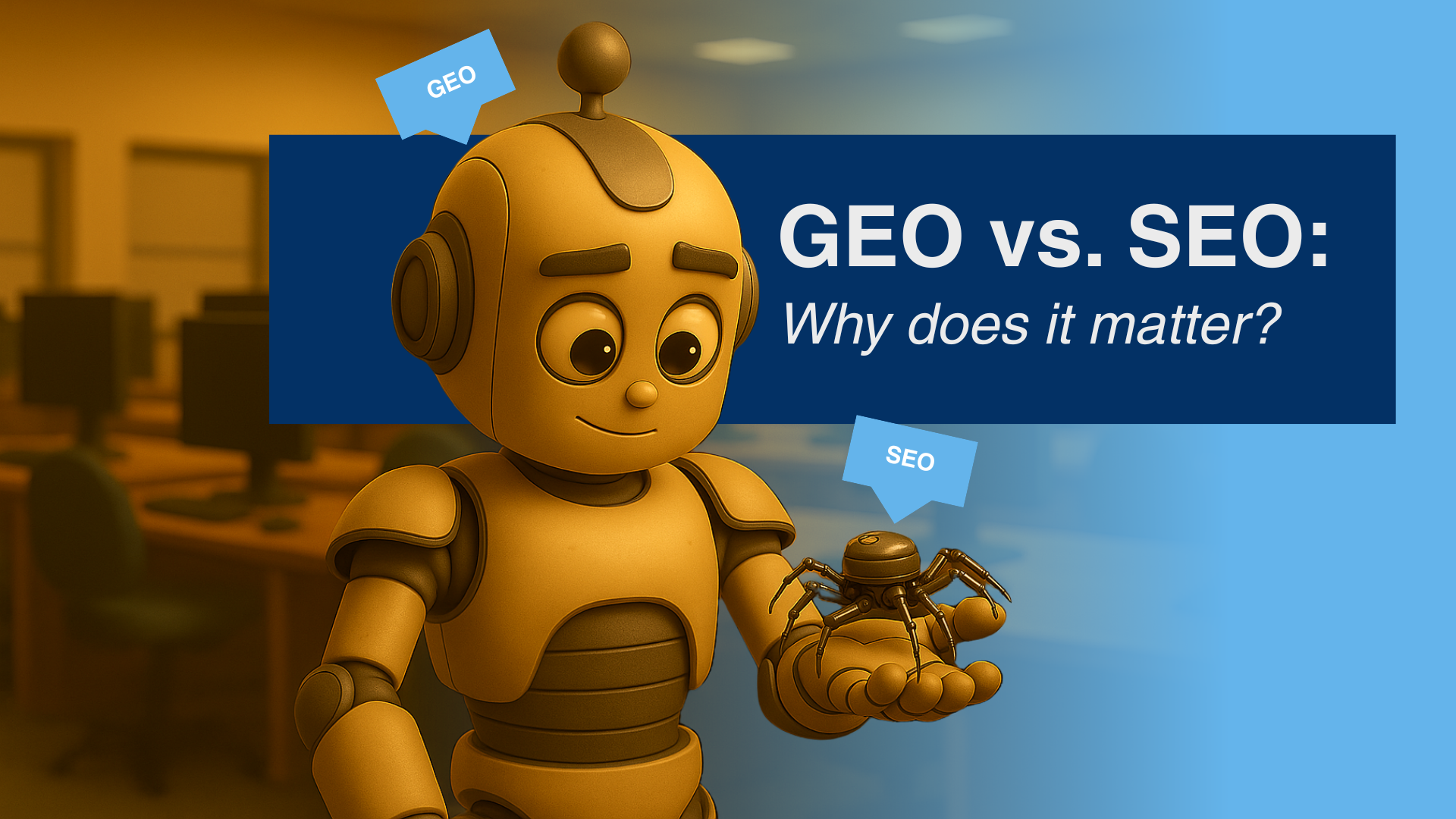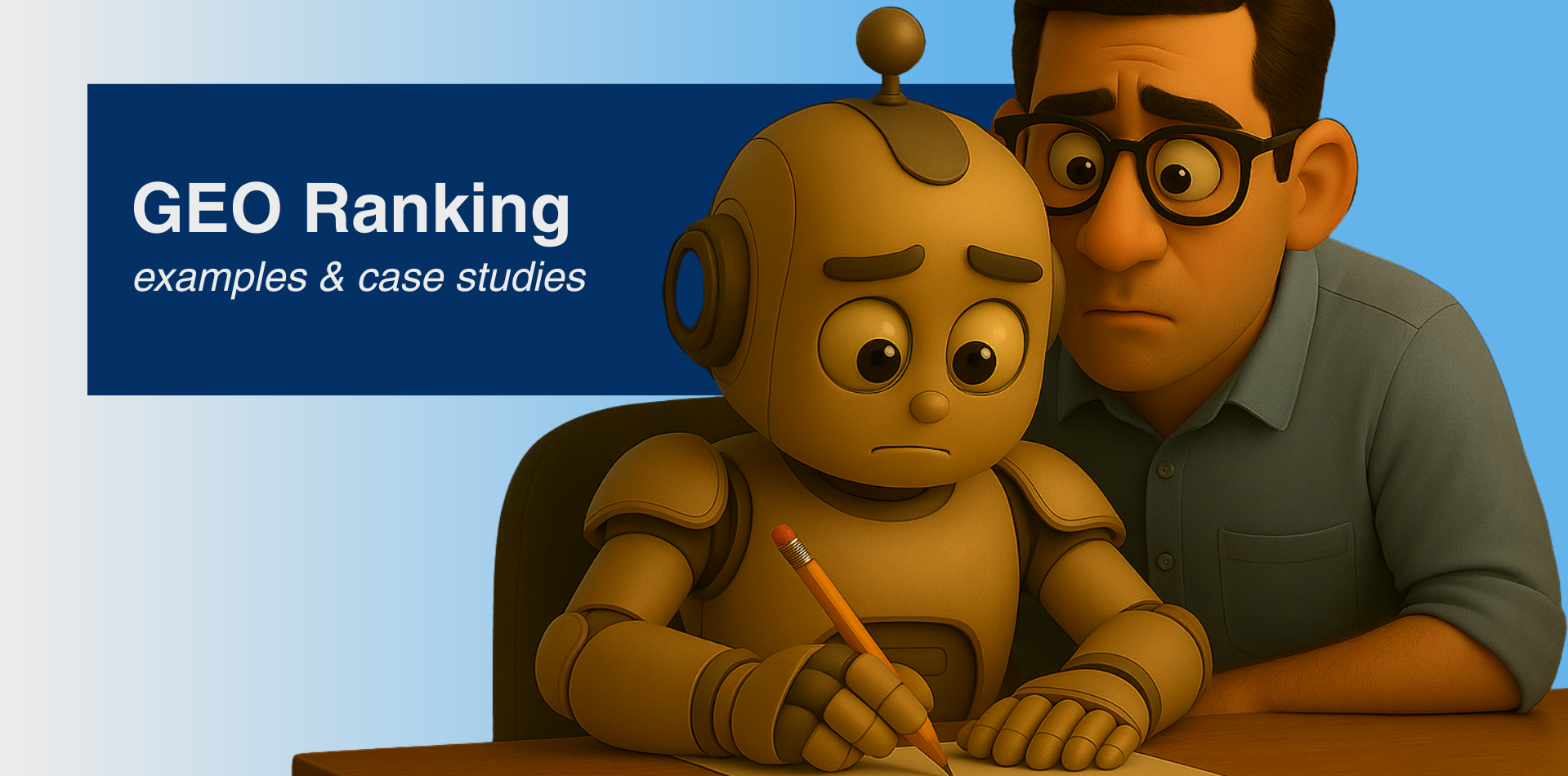GEO vs. SEO: What’s the Difference and Why It Matters
SEO gets you ranked. GEO gets you quoted. You need both: SEO builds authority; GEO makes that authority easy for AI systems to find, trust, and cite.
Recent tracking shows that ~54% of AI Overview citations now overlap with organic rankings, so rankings still matter, but citation is its own win condition.
Prefer the big-picture strategy first? Check out The Complete GEO Guide.
Why this comparison matters right now
AI is becoming the interface for search. Google’s AI experiences summarize answers and selectively cite sources, so not every top-ranking page gets chosen. For the LLM-specific playbook, see LLMO: Large Language Model Optimization.
That’s the gap GEO closes: it structures content for retrieval, lift, and attribution — so you’re more likely to be the cited source.
In March 2025, 13.14% of queries triggered AI Overviews, up from 6.49% in January, proving that AI answers are expanding fast.
Quick definitions
SEO is how you rank on search pages. GEO is how you get included and cited inside LLMs and AI answers (AI Overviews, AI Mode, and chat-style engines). GEO builds on SEO and adds snippet engineering, schema, provenance (author/date/source), and Q&A structure.
SEO (Search Engine Optimization) = improve organic rankings and clicks via on-page, technical, and off-page signals, guided by helpful, people-first standards and E-E-A-T.
GEO (Generative Engine Optimization) = make content retrievable, quotable, and safe to cite for AI systems—so you appear inside AI answers.
Multiple studies show strong — not perfect — overlap between AI citations and top organic results; ranking helps, but GEO determines inclusion.
GEO vs. SEO
Old world: rank the list. New layer: win the quote.
Keep doing SEO; add GEO to boost your odds of being cited at answer time.
| Dimension | SEO (rank) | GEO (quote) |
|---|---|---|
| Where you show | Blue links on SERPs | Inside AI answers (AIO/AI Mode/chat) |
| Primary goal | Impressions → clicks | Inclusion + citation |
| What you optimize | Keywords, internal links, technical, links | 2–3 sentence snippets, Q&A headers, schema, provenance |
| Signals that help | Helpful content, E-E-A-T, speed, crawlability | Clear attribution, safe phrasing, consistent facts, source links |
| What you measure | Rank, CTR, conversions | AI mentions, citations, “AI share of voice,” lifted snippets |
| Reality check | Ranking improves odds of being cited | Inclusion isn’t guaranteed—even for #1. Engineer snippets to be “liftable.” |
Across large datasets, overlap with organic is real, but not 1:1. So, you need to design pages that are easy to lift and safe to cite.
Retrieval & citation dynamics (how it works in results)
Google’s AI Overviews often cite pages that already rank, but not always. That’s why you optimize for rank + quote. They both matter.
What the data says (two angles):
Convergence trend: A 16-month BrightEdge study shows 54% of AI Overview citations now overlap with organic results (up from 32%). Translation: good SEO raises your odds of being cited.
Not 1:1: seoClarity found 97% of queries had at least one overlap with the top-20 organic results—yet that still leaves room for non-ranking pages to appear, and exact positions don’t guarantee inclusion.
So what do we do? (GEO moves)
Engineer quotables: add 2–3 sentence, safe-to-cite answers under each H2/H3.
Add provenance: clear author, full publish/updated dates, and primary sources.
Mark it up: Article + FAQ (and HowTo where steps exist).
Track it: log “AI share of voice” (where you’re cited) monthly across AIO, AI Mode, ChatGPT, Gemini, and Perplexity.
AI Overviews showed up for ~13.14% of U.S. desktop queries in March 2025 (up from 6.49% in January), so inclusion opportunities are growing.
The deep-dive: how SEO and GEO actually differ
1) Where visibility happens
SEO: Blue links on a SERP. Your metrics: impressions, rankings, CTR.
GEO: Inside AI answers (AI Overviews and chat-style results). Your metrics: citations/mentions, answer placement, and “AI share of voice.”
Takeaway: You still want rank. But answer inclusion is now a parallel goal.
2) What gets rewarded
SEO: Content that is helpful, reliable, and people-first; signals of E‑E‑A‑T (experience, expertise, authoritativeness, trust).
GEO: All of the above plus content that is easy to lift (2–3 sentence mini-answers, clean definitions, steps), clearly attributable (bylines, dates, sources), and organized as Q&A for retrieval. Topic clusters/pillars amplify authority and coverage.
Takeaway: GEO is SEO with snippet engineering, schema, and provenance.
3) Retrieval & citation dynamics
AI answers include links to the web, but inclusion is selective: not every top-ranking URL gets cited, and some lower-ranking pages do get surfaced.
Translation: ranking is a prerequisite signal, not a guarantee.
Takeaway: Keyword rank is the floor; GEO determines if you’re the quote.
4) Tracking and optimization workflow
SEO stack: Keyword research → on-page optimization → links → technical health → rank/CTR tracking.
GEO stack: Prompt mapping → snippet-ready writing → FAQ/HowTo schema → provenance tagging → AI visibility tracking → manual prompt tests in ChatGPT/Gemini/Perplexity → content iteration.
Real examples & case studies
The stories below are composites. We’ve anonymized details, but the dynamics and results mirror what we see across programs.
Case study A: “Ranked but not cited”
Reason: The content is too dense, weak provenance
Scenario: A mid-market B2B guide ranks #3 for a “how to integrate X” keyword. But in AI Overviews for related how-to prompts, the brand is absent from citations.
Diagnosis: Section intros lacked concise mini-answers; steps were embedded in long paragraphs; no visible “last updated” date; byline lacked expertise signals.
Fix: Rewrote each H2 with a 2–3 sentence answer; added a 5-step checklist; implemented Article + HowTo + FAQ schema; added author bio + updated date; linked to primary sources.
Result: Within a few weeks, AI Overview/AI Mode tracking began showing recurring visibility for adjacent prompts, while classic rankings held steady.
Why it worked: AI experiences “lift” short, safe-to-cite lines. Schema and provenance reduce risk; concise answers increase lift probability.
Case study B: “Lower rank, but cited”
Reason: clear snippet design wins the quote
Scenario: A consumer finance explainer sits #12 for a mid-tail query, but the page earns a citation in AI Overviews for the question-form version (“what is ___?”).
What’s special: The page leads with a bolded two-sentence definition, then a 3-step “how it works,” then a short table of fees.
Result: Despite not being on page one, the explainer appears as a cited source in the AI answer panel.
Why it worked: The definition was copy-ready and safe to attribute.
Case study C: “Topic cluster lift” (breadth + depth drives inclusion)
Scenario: A software brand builds a pillar page plus 8 subpages (how-tos, glossary, comparisons).
Action: Internal links connect hub ↔ spokes; every subpage opens with a snippet; FAQs mirror common prompts.
Result: AI Overviews begin citing the pillar or a supporting post depending on the query framing (definition vs. how-to). The cluster wins multiple entry points and improves overall citation share.
Why keyword-based SEO is no longer sufficient
AI answers collapse the scroll. Users get their summary—and sometimes never scroll to blue links. If your content isn’t built to be lifted, the model may summarize from others.
Prompts ≠ keywords. Users ask natural questions. Pages designed only for exact-match keywords may miss the phrasing that triggers inclusion.
Attribution favors clarity. AI systems prefer sources with clear authors, dates, and clean, self-contained snippets. Keyword-stuffed paragraphs don’t survive the filter.
Measurement has changed. You must track AI visibility (citations, mentions, share of voice) in addition to rank/CTR.
Bottom line: Keep doing SEO. But add GEO to ensure your best pages are the ones quoted.
How to add GEO to your SEO in 7 moves
Provenance: Add bylines with short bios; show publish & updated dates; link to primary sources.
Snippet engineering: Put a 1–3 sentence mini-answer under every H2/H3; include 3–5 quotable lines per article.
Q&A formatting: Use real question headers and brief answers, then expand.
Schema: Add Article + FAQ, and HowTo for step guides.
Topic clusters: Build a pillar + spokes model and interlink.
Prompt mapping: Translate priority keywords into natural-language prompts (who/what/how/should/why); ensure content explicitly answers them.
Tracking: Configure AI Overview/AI Mode monitoring; run a monthly manual prompt test in ChatGPT/Gemini/Perplexity; log citations and mentions over time.
Frequently asked questions (GEO vs SEO)
-
No. Most AI citations still come from strong pages, so SEO remains foundational. GEO layers the retrieval, lift, and attribution tactics that increase your chance of being cited.
-
Yes. AI experiences include links. Even when click-through is lower, brand presence at answer-time builds authority and influences decisions.
-
Use your SEO suite’s AI-visibility reporting and review SERP snapshots; supplement with manual prompt tests. Track a shortlist of prompts monthly and note which URLs get cited.
-
Pick your top three posts. Add a bold two-sentence definition or answer below each H2, plus FAQ schema at the bottom. Re-test your prompts after reindexing.
Real-world example prompts to test (copy/paste)
“what is [your core concept]”
“how to [task your product helps with] step by step”
“[concept] vs [alternative] which is better for [use case]”
“best way to [job to be done] according to [industry or brand]”
Run them in Google + AI Overview, Google AI Mode (where available), ChatGPT, Perplexity, Gemini, and Claude. Note whether you appear, and which sentences the AI seems to lift.
Conclusion
Classic SEO is necessary — but it’s no longer sufficient in the age of AI summaries. The winners will do both: keep ranking power strong and structure content to be lifted and cited inside AI answers. That’s GEO.

Author: Noah Swanson
Noah Swanson is the founder and Chief Content Officer of Tellwell.




